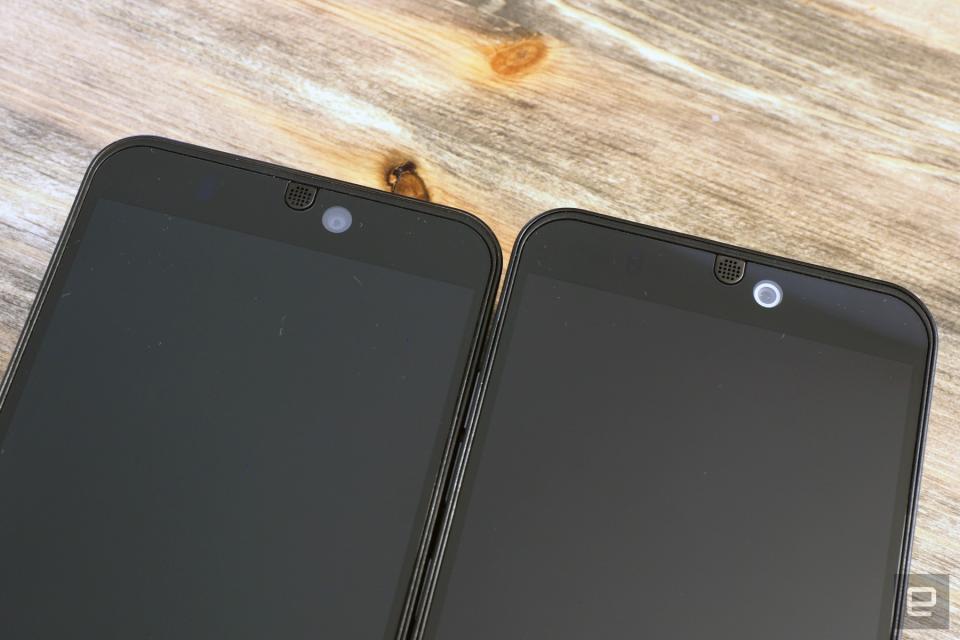Fairphone updates its ethical, modular phone with new cameras
The Fairphone 3+ has a new 48-megapixel Samsung camera sensor.
Fairphone is a Dutch social enterprise that’s trying to improve supply chain and labor conditions in the tech industry. It has released three smartphones over its seven-year lifespan, each one sourcing materials and labor from the most ethical sources it can. Last year, the Fairphone 3 debuted to mostly positive, albeit qualified, reviews, and now we’re meeting its successor. Say hello to the Fairphone 3+.
The Fairphone 3+, as you might guess, isn’t substantially different to its immediate predecessor. It uses 40 percent recycled plastics in its case, compared to the nine percent found in the Fairphone 3, and there are a couple of hardware changes. The most major changes here are the speakers, which have been tweaked to offer “louder, crisper sound” and a revamped camera, more on that in a moment. The Fairphone 3+ will ship with stock Android 10 when it launches on September 14th, although that too will be available for Fairphone 3 users in the same month.
Fairphone 3 | Fairphone 3+ | |
Operating System | Android 9 | Android 10 |
Chipset | Snapdragon 632 | Snapdragon 632 |
Memory | 4GB RAM | 4GB RAM |
Storage | 64GB + microSD-card | 64GB + microSD-card |
Battery | 3,000mAh | 3,000mAh |
Display | 5.65-inch Full HD (18:9) | 5.65-inch Full HD (18:9) |
Primary Camera | 12MP, f/1.8 | 48MP, f/1.79 |
Forward-Facing Camera | 8MP, f/2.0 | 16MP, f/2.0 |
Put both devices side-by-side and, on the front at least, the only tell that they’re not the same phone is a little ring around the 3+’s forward-facing camera. Flip them over and the differences are more notable: the 3’s smoke grey transparent backplate has been ditched in favor of opaque black. The only other detail on the back is the tiny NFC etching that’s now on the rear cover, another change from last year’s model.
The most important feature here however are those camera modules which, because the Fairphone is modular, are also available to Fairphone 3 users. Buy the upgrade before the end of September and you can get both modules for €70 ($82), after which the price rises to €94.90 ($112). And it should be easy enough to do, since the Fairphone is designed to be torn down and put back together by rank amateurs like, uh, me. That’s why it ships with a screwdriver instead of a charger.

This isn’t the first time you could upgrade a Fairphone device yourself. There was an aftermarket camera upgrade available for the Fairphone 2 but it was pretty minor. In that instance, you were swapping out an 8-megapixel lens for a 12-megapixel replacement. Here, you’re ditching a 12-megapixel f/1.8 Sony Exmor IMX363 for a far more substantial 48-megapixel f/1.79 Samsung GM1, optimized by Arcsoft. And up front, the 8-megapixel, f/2.0 forward-facing sensor has been replaced for a 16-megapixel version. This is, according to the company, to address reports concerning the 3’s low-light performance and fuzzy detail.
The weak processor and fair weather camera were two of the things that most Fairphone 3 reviews honed in on. DXOMark gave the Fairphone 3 a score of 66, putting it just a point ahead of a low-end Samsung phone from 2018. Reviewer Lynn Anderson said that the phone “does not have a camera module that any serious photographer or videographer would choose for its image quality.” But that may not matter if you can simply swap out the lackluster components for better ones, right?

Unfortunately, I’m not sure this upgrade is going to make you think twice about buying a Pixel 4. During a few days of testing, color balance, detail, noise and distortion are so similar between both devices that it’s really hard to recommend this upgrade.
Similarly, there’s still just enough of a shutter lag that you could miss an action shot waiting for the device to process the existing image. This is not, alas, the tweak that’ll make the aesthetes at DXOMark faint into their couches.

Fairphone’s VP of Product Operations Wayne Huang says that the 3+’s camera is still being optimized in the lab ahead of launch. And that its own benchmarks show an improvement over the 3’s sensors, especially in lower-light. Users should be able to squeeze better images from the phone in darker situations and when the subject is backlit, as well as notice an overall reduction in noise and distortion when zooming into images. I haven’t seen these improvements yet, however, but if I’m able to see further improvements in images, I’ll update this story.

From today, you can pre-order both the Fairphone 3+ and the camera modules to upgrade your existing Fairphone 3. The new device costs €469 ($554) and begins shipping in Europe on September 14th. The camera modules, meanwhile, will set you back €70 until October 1st, after which the price rises to €94.30. And if you’re not too fussed about imaging but want a more ethical phone, you can opt for the cheaper Fairphone 3, which has been discounted to €419 ($495).
